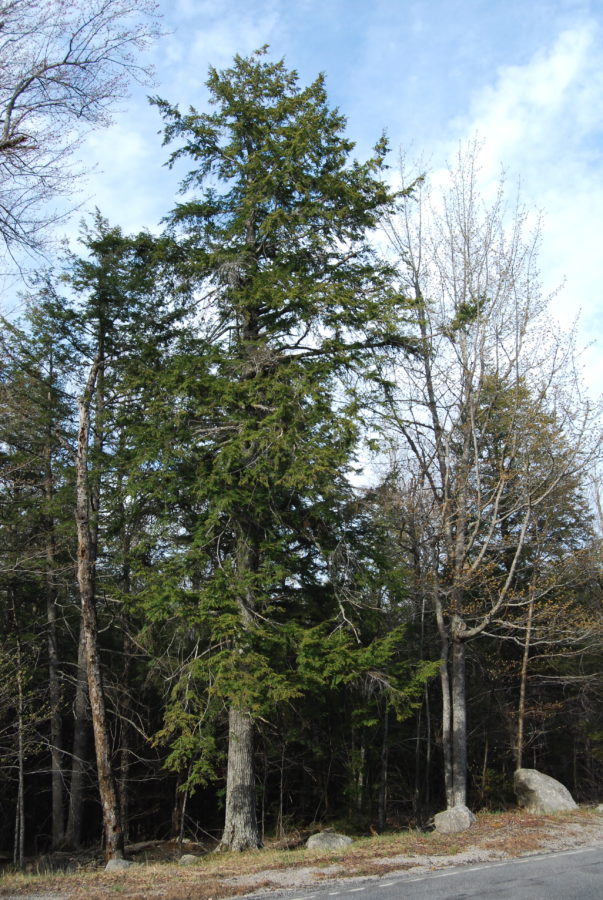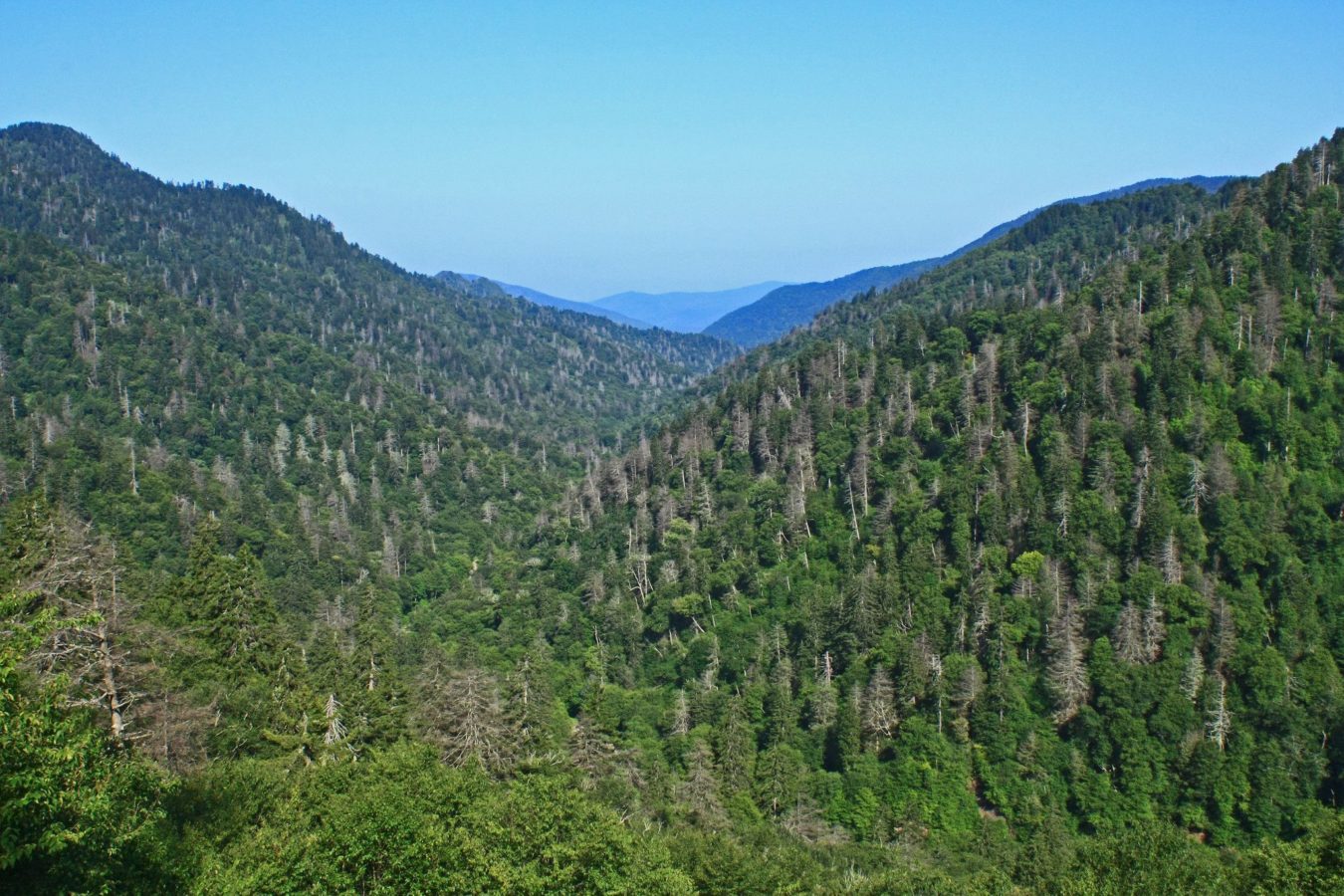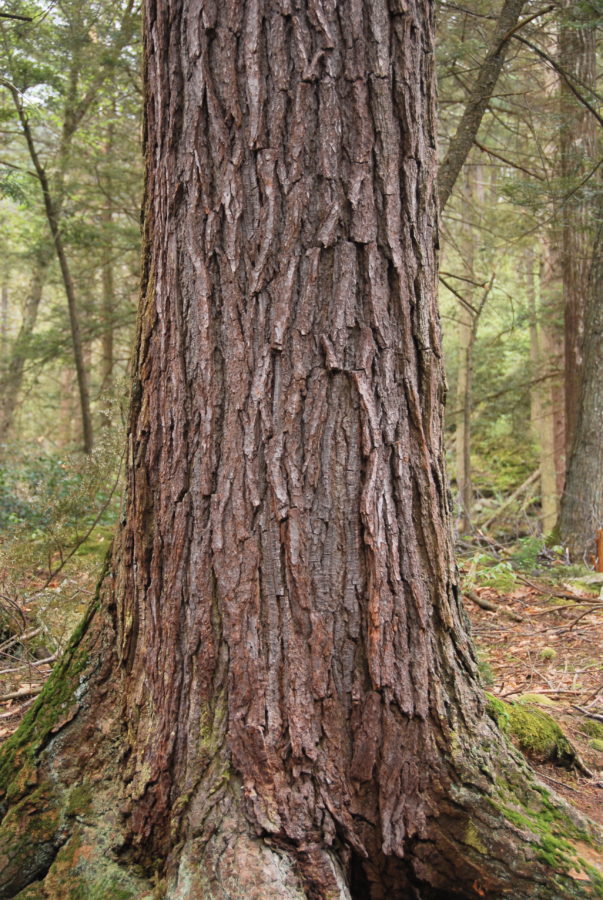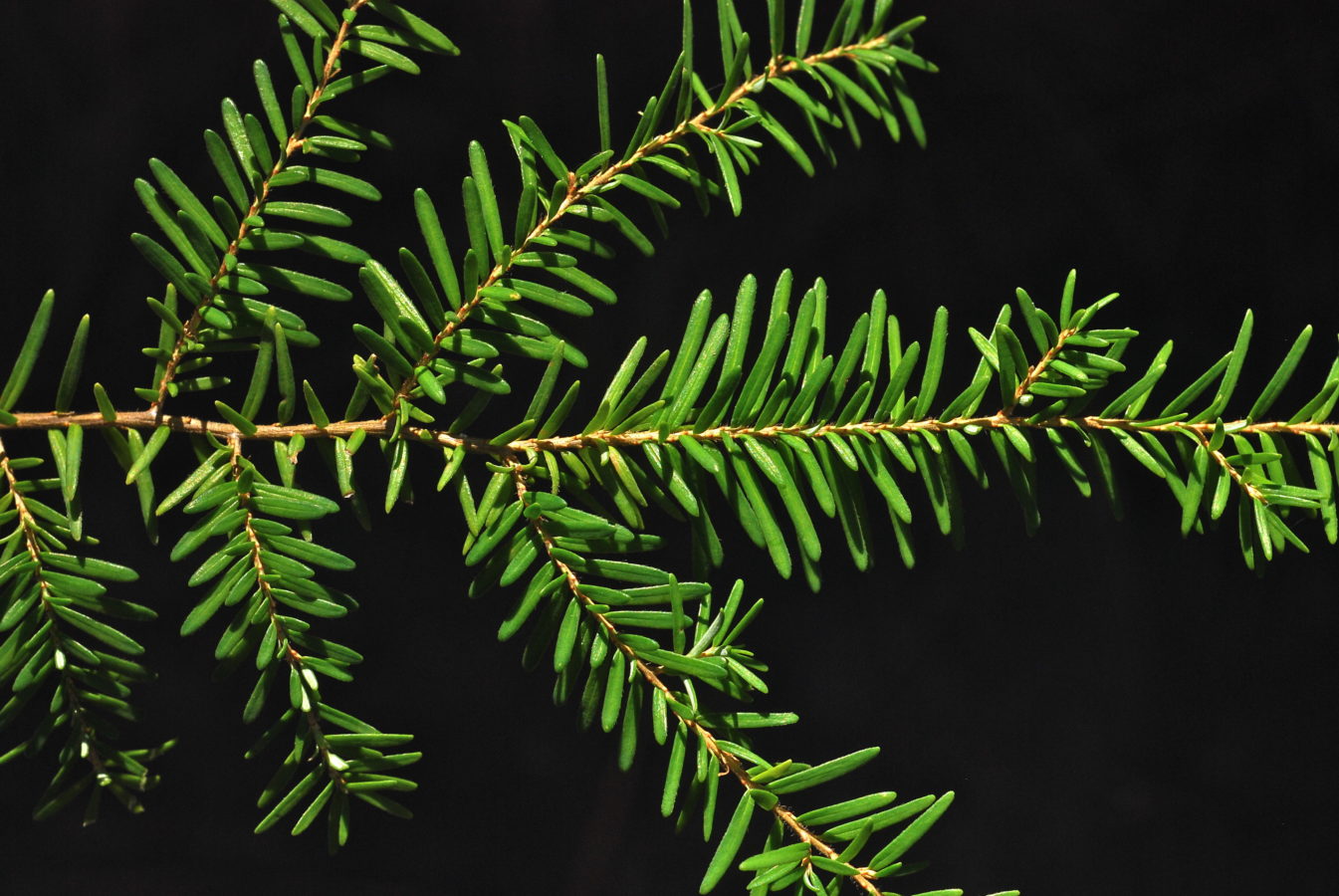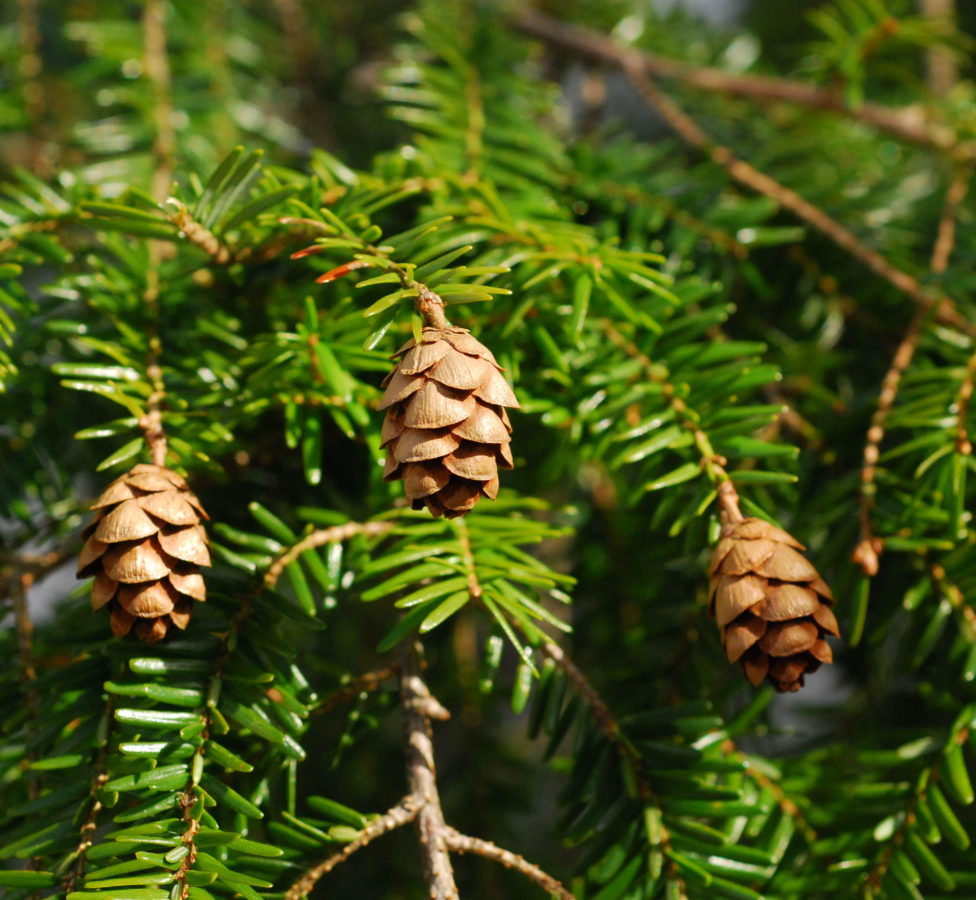Pinaceae
Tsuga canadensis
This very widespread and abundant species occurs in many forests and woods in North America. In parts of its range, dieback is caused by an invasive Hemlock Woolly Adelgid (Adelges tsugae). This has resulted in an asessment of Near Threatened.
Human Uses
The slow growing Eastern Hemlock produces lumber of good quality suitable for building (e.g. roofs, floors) and making crates or boxes, but until recently these kinds of use were completely overshadowed by its use in the paper pulp industry. Other former uses were to make telegraph poles and railway sleepers. In the past its bark was used in the tanning industry. Eastern Hemlock is still in demand as an ornamental tree; it was introduced to Europe in 1736. In gardens and parks it often grows several trunks, but this is by no means a characteristic of the species in its natural habitat. A large number of cultivars has been produced, including variegated foliage plants and dwarf forms raised from cuttings, whereby the slow growth of this species is an obvious advantage over Western Hemlock, of which few cultivars exist. Conversely, due to that slower growth Eastern Hemlock is less preferred as a forestry plantation tree, giving way to Western Hemlock.
References and further reading
- Burns, R.M. and Honkala, B.H. 1990. Silvics of North America. USDA, Forest Service, Washington, DC.
- Eckenwalder, J. 2009. Conifers of the World: The Complete Reference. Timber Press, Portland, Oregon.
- Farjon, A. 2010. A Handbook of the World's Conifers. Koninklijke Brill, Leiden.
- Farjon, A. 2013. Tsuga canadensis. The IUCN Red List of Threatened Species 2013: e.T42431A2979676. http://dx.doi.org/10.2305/IUCN...
- Heard, M.J. and Valente, M.J. 2009. Fossil pollen records forecast response of forests to hemlock woolly adelgid invasion. Ecography 32: 881-887.
- Jetton, R., Whittier, W.A., Dvorak, W. and Potter, K. 2008. Status of ex situ conservation efforts for Carolina and Eastern Hemlock in the Southeastern United States. B. Onke and R. Reardon (compilers) Fourth Symposium on Hemlock Woolly Adelgid in the Eastern United States, February 12-14, 2008, Hartford Hilton Hotel, Hartford, Connecticut: 81-90.
- Krapfl, K.J., Holzmueller, E.J. and Jenkins, M.A. 2011. Early impacts of hemlock woody adelgid in Tsuga canadensis forest communities of the southern Appalachian Mountains. Bulletin of the Torrey Botanical Club 138(1): 93-106.
- Oswald, W.W., Doughty, E.D., Foster, D.R., Shuman, B.N. and Wagner, D.L., 2016. Evaluating the role of insects in the middle-Holocene Tsuga decline. The Journal of the Torrey Botanical Society, 144(1), 35-39.
- Rentch, J. and Schuler, T. (eds.). 2010. Proceedings of the Conference on the Ecology and Management of High-Elevation Forests in the Central and Southern Appalachian Mountains Proceedings of a Conference held at Snowshoe Mountain Resort, Slatyfork, WV, May 14-15, 2009. U.S. Forest Service, Newtown Square, PA.
